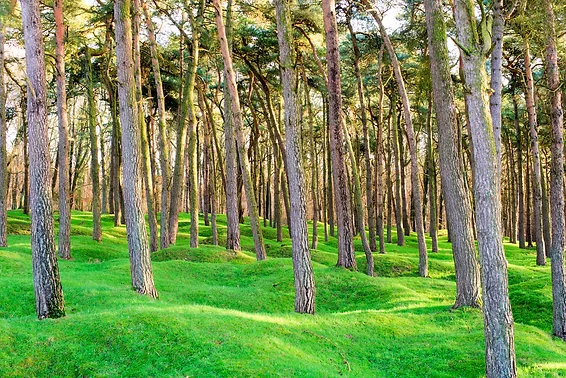When trees have poor structural growth, cabling and bracing – two effective tree preservation techniques – can stave off the need for removal. Arborists install flexible, high-strength steel cables and rigid bracing rods to support weak branches, limit excessive limb motion and reduce structural stress. Proper cabling and bracing works to provide the support needed to encourage strong growth and help trees stand firm in severe weather conditions. Tree preservation using cables and braces can improve the structural integrity of many types of at-risk specimens. Below are five growth issues that can be addressed through cabling and bracing.
U-Shaped Branches
When a trunk grows to develop a pronounced “U” shape, the weight of the canopy is often enough to cause the branches to split and break. And, with severe weather, damage is more likely. To redistribute the weight load and prevent limb breakage, arborists often recommend cabling and bracing.
Split Trunks
If storm-related damage or structural stress creates a vertical trunk crack, installing cables and braces can help prevent failure and encourage proper structural growth. However, if you don’t pursue preservation early enough, the crack may not heal and removal may be the only course of action.
Leaning Trees
A slight natural lean is usually not a problem, but when the trunk is leaning at a more pronounced angle, arborists may suggest preservation via cabling and bracing. The same goes for a trunk that develops a sudden lean after a severe weather event, though some specimens may require removal.
Uprooted Specimens
Most of the time, when a tree is completely uprooted during a severe storm, arborists recommend removal. In some cases, however, the trunk can be repositioned and held in place with cables and braces until the root system is strong enough to provide sufficient trunk support.
Multiple Trunks
Often, trees that have more than one trunk fail due to the unbalanced weight load the limbs must carry. To provide support, encourage healthy structural growth and prevent failure, arborists may advise cabling and bracing.
Should You Consider Tree Preservation?
Cabling and bracing are effective tree preservation techniques, but sometimes removal is the only option. Uprooted trees and those with a significant lean or split can’t always be saved with cables and braces, nor can some specimens with major cracks covering the main trunk. For expert advice on whether tree preservation is the right solution for the at-risk specimens on your northern Utah property, call on
Rivendell Tree Experts. Our certified arborists have the training, knowledge and expertise to determine when installing cables and braces is the right approach – and if it is, our team can complete the job properly, at an affordable price. Rivendell Tree Experts offers practical, cost-effective services throughout the greater Salt Lake City area, and our team strives to provide exceptional customer care. To schedule a free, no-obligation tree preservation consultation, contact our Lehi office today.




